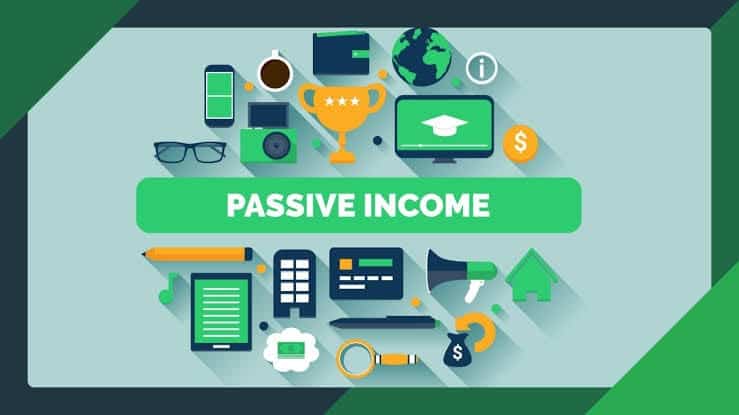The Impact of Passive Income on Achieving Financial Independence

In today's fast-paced world, the traditional path of working a 9-to-5 job until retirement often feels less secure and fulfilling. More people are seeking alternatives, and the concept of financial independence (FI) has emerged as a powerful aspiration. Financial independence means having enough passive income to cover your living expenses, freeing you from the necessity of working for a paycheck. It's about gaining control over your time, pursuing passions, and living life on your own terms.
The cornerstone of achieving FI is passive income. Unlike active income, which requires your continuous time and effort (like a salary), passive income streams generate money with minimal ongoing work. While building these streams often demands significant initial effort, investment, or creativity, once established, they can provide a steady flow of funds, accelerating your journey to financial freedom. This article will delve into the profound impact of passive income on achieving financial independence, exploring various avenues, the benefits it offers, and crucial considerations for those embarking on this transformative journey.
Understanding Financial Independence and Passive Income
To truly grasp the impact of passive income, we first need to define both concepts clearly.
Financial Independence (FI): This isn't about being rich; it's about being free. Specifically, it means reaching a point where your passive income consistently exceeds your monthly or annual living expenses. At this stage, working becomes optional, rather than a necessity. The goal is often framed by the "25x rule," suggesting you need to save 25 times your annual expenses to live off a 4% withdrawal rate (assuming a diversified investment portfolio).
Passive Income: This refers to income that requires little to no ongoing effort to earn once the initial work is done. It contrasts sharply with active income (wages, salaries, consulting fees) where you trade your time directly for money. Examples range from simple interest earnings to complex business ventures.
The synergy between these two concepts is profound: passive income is the engine that drives you towards the destination of financial independence.
The Transformative Power of Passive Income
The ability to generate income without actively working transforms your financial landscape in several critical ways:
1. Accelerated Wealth Accumulation
Passive income doesn't just cover expenses; it can also be reinvested. When your investments generate income, and that income is reinvested to generate even more income, you unlock the power of compounding. This snowball effect significantly accelerates wealth accumulation compared to relying solely on active income and savings. The earlier you start building passive income streams, the more time compounding has to work its magic.
2. Enhanced Financial Security and Reduced Stress
A diversified portfolio of passive income streams acts as a financial safety net. If you lose your job or face an unexpected active income reduction, your passive income can cushion the blow, preventing financial catastrophe. This redundancy provides immense peace of mind, reduces financial stress, and allows for greater risk-taking in career or life choices. You're no longer solely dependent on a single source of income.
3. True Time Freedom
This is perhaps the most appealing aspect of financial independence. When your living expenses are covered by passive income, your time becomes your own. You're no longer selling hours for dollars. This freedom allows you to:
- Pursue Passions: Dedicate time to hobbies, creative projects, or learning new skills.
- Travel More: Explore the world without being tied to vacation days.
- Spend Time with Loved Ones: Prioritize family and friends.
- Contribute to Society: Volunteer or engage in philanthropic activities without financial pressure.
- Retire Early: Exit the traditional workforce decades before the standard retirement age.
4. Diversification of Income Sources
Relying on a single income source is inherently risky. Passive income encourages the creation of multiple streams, reducing your overall financial vulnerability. If one stream falters, others can pick up the slack. This diversification also provides resilience against economic downturns or industry-specific challenges.
5. Leveraging Assets (Beyond Just Cash)
Passive income forces you to think about how your existing assets – whether money, property, or intellectual property – can work for you. It shifts the mindset from simply saving money to strategically investing it to generate ongoing returns. This can include:
- Financial Assets: Stocks, bonds, mutual funds, real estate investment trusts (REITs).
- Physical Assets: Rental properties, equipment.
- Intellectual Assets: Books, courses, software, patents.
Common Avenues for Generating Passive Income
While "passive" often implies minimal effort, most passive income streams require significant upfront work, capital, or both. Here are some popular avenues:
- Dividend Stocks and REITs: Investing in companies that pay regular dividends or Real Estate Investment Trusts (REITs) can provide a consistent cash flow. This requires careful research into financially sound companies.
- Rental Properties: Owning residential or commercial properties and collecting rent provides a recurring income stream. This often involves significant upfront capital, ongoing management, and potential tenant issues, but can be highly lucrative.
- Peer-to-Peer (P2P) Lending: Lending money directly to individuals or businesses through online platforms can yield interest payments. This carries higher risk but can offer attractive returns.
- Creating Digital Products: Developing and selling e-books, online courses, stock photos, software, or digital templates. Once created, these products can generate sales repeatedly with minimal further effort.
- Affiliate Marketing: Earning commissions by promoting other companies' products or services through your website, blog, or social media. Once your content is established, it can continue to generate income.
- Royalties from Intellectual Property: Earning money from patents, music, books, or art.
- High-Yield Savings Accounts/Certificates of Deposit (CDs): While offering lower returns than other options, these provide a very low-risk way to earn passive interest on your savings.
- Vending Machines/Laundromats: Businesses that require an initial investment but minimal daily management.
Crucial Considerations on the Path to FI with Passive Income
While the allure of passive income is strong, the journey is not without its nuances and challenges:
- "Passive" Does Not Mean "No Work": Most passive income streams require significant initial effort, investment, or ongoing maintenance. A rental property needs repairs and tenant management. A digital product needs marketing updates. Even dividend portfolios require monitoring. The "passive" aspect refers to the decoupling of income from active hours worked, not a magical money tree.
- Risk Management: All investments carry risk. Rental properties can have vacancies or costly repairs. Stocks can decline in value. P2P lending can result in defaults. Diversifying your passive income streams and understanding the risks associated with each is paramount.
- Capital Requirement: Many of the most effective passive income streams, such as real estate or substantial dividend portfolios, require significant upfront capital. Building this capital through active income and diligent saving is often the first crucial step.
- Taxes: Passive income is still taxable. Understanding the tax implications of different income streams (e.g., dividends, rental income, capital gains) and planning accordingly is essential for maximizing net income.
- Patience and Persistence: Building meaningful passive income takes time. It's a marathon, not a sprint. Consistency in saving, investing, and nurturing your income streams is key to long-term success.
- Inflation: The goal of FI is to cover future living expenses. It's crucial to factor in inflation, ensuring your passive income streams grow over time or that your initial capital is large enough to sustain increasing expenses.
The Broader Impact on Life Quality
Beyond the financial metrics, achieving financial independence through passive income profoundly impacts overall life quality. It shifts the focus from survival to thriving. The mental freedom derived from knowing your basic needs are met, regardless of your employment status, can unlock creativity, reduce stress-related health issues, and foster deeper personal relationships. It allows for intentional living, where choices are made based on desire and purpose rather than financial obligation.
This transition from active to passive dependence is not just about money; it’s about regaining autonomy. It enables a lifestyle where one can decide to work, travel, learn, or simply be, purely out of choice. This shift in control is arguably the greatest reward of the entire journey.
Conclusion
Passive income is undeniably the cornerstone of achieving financial independence. It transforms the paradigm of earning, shifting from a linear exchange of time for money to a compounding engine that generates wealth with minimal ongoing effort. While the journey demands initial investment, dedication, and smart risk management, the benefits—accelerated wealth accumulation, enhanced financial security, true time freedom, and diversified income—are profound and life-altering.
For those aspiring to break free from the traditional rat race, understanding, building, and nurturing diverse passive income streams is not just a financial strategy; it's a blueprint for a life lived on your own terms. It's about harnessing your resources to build a future where work is a choice, not a necessity, and where your time truly belongs to you.

Related